
I remember waking one morning in late winter, to a sound that caught my heart in my mouth. Waking all the way up, and jumping straight out of bed.
Down the stairs in sleepy socks. Rustling hurriedly for gumboots, then jacket, gloves, and then out into the frosty air - breathless, eyes up to the trees all around.
The same way you might wake up to a shriek, or a crash, or a dog who shouldn’t be barking with quite that tone, this late in the night. A whole-body response that takes you down the stairs, coat on, and out the door - before you’re even sure why.
The forest around me was ringing. Loudly. Clamouring, even. The tall eucalypts on the western side of our little mudbrick cottage were full of large black silhouettes that I half-recognised, in my sleepy blinking.
Kring, kring. Kring, kring. So loud. So many. And all down the gully, too. Kring, kring!
It was my first year living in that highland ecosystem. And the Bell currawongs had just arrived, with the waning winter, from the lowlands - to mate and to nest, in this high valley on Djaara country.
Bell currawongs have a call that would pierce your heart. Maybe they were particularly loud, that time, given they had just arrived in the area - perhaps calling to establish seasonal territory, or prospective mates. Checking in on family.
It was my first experience of them. And it was visceral. And I have never forgotten that morning.

You could say that we have a lot of similar 'big black birds - sometimes with white bits’ here in so-called Australia. Magpies. Currawongs. Ravens. And there’s others too.
All very confident birds, with sharp eyes, and sharper beaks. And differing amounts of white and black feathers (apart from the ravens, who don’t do the white thing at all, ever). All fairly well adapted to encroaching urbanisation, and making the most of new, novel ecosystems.
I grew up with the constant summer calls of the Pied currawongs in the forests around Lithgow - another high valley - up north though, in the Blue Mountains. Wiradjuri country.
Summer in Lithgow was all wisps of coal smoke, scrumping wild apples, and Currawongs calling, to me. A high, scrubby valley at the top of a mountain range, where the Currawongs would arrive in spring, each year.
One side of my grandparent’s cottage grew wet green moss on the bricks, all year round. On the other side, the grass baked dry and dead, every sweltering summer. It was a valley of extremes. And coal. And Currawongs.
But those currawongs were of a different call. Their songs were varied, always coming back to the ‘currawong, currawong’. They had flashes of white on their wings and tail. Enough black on them to definitely not be a magpie, though. And larger, and with a formidable beak.
They called first, in the morning, before the other birds - and set the scene for the long hot summer days. With maybe some frost, overnight, inbetween.
‘Currawong, currawong.’ ‘Currawong, currawong.’

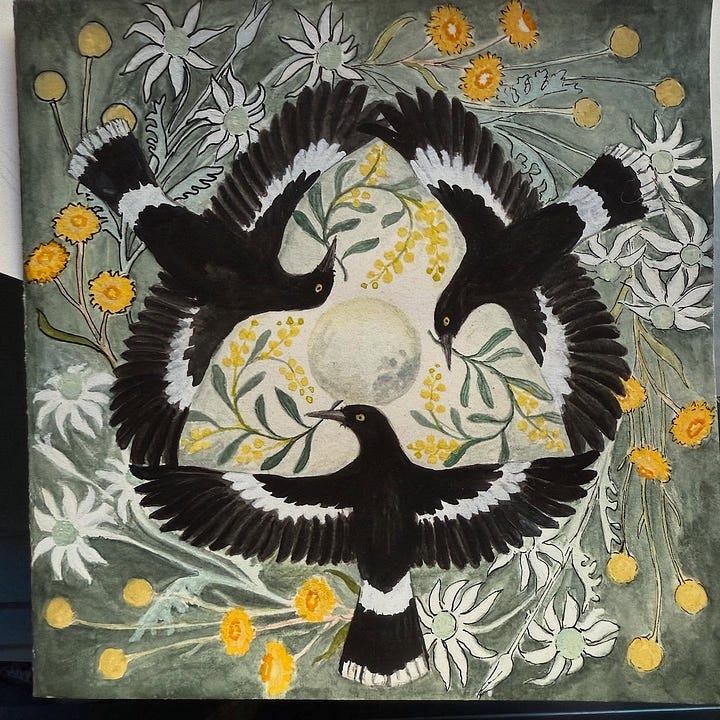
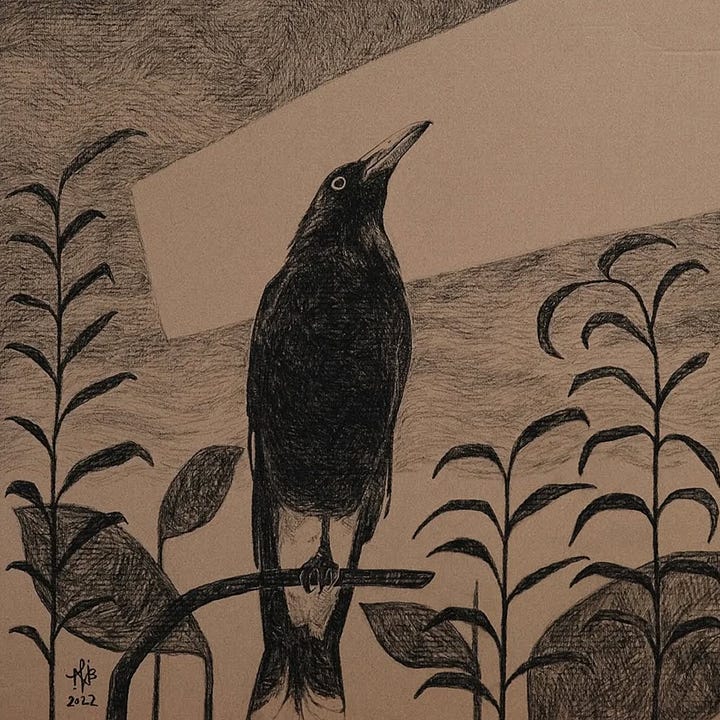
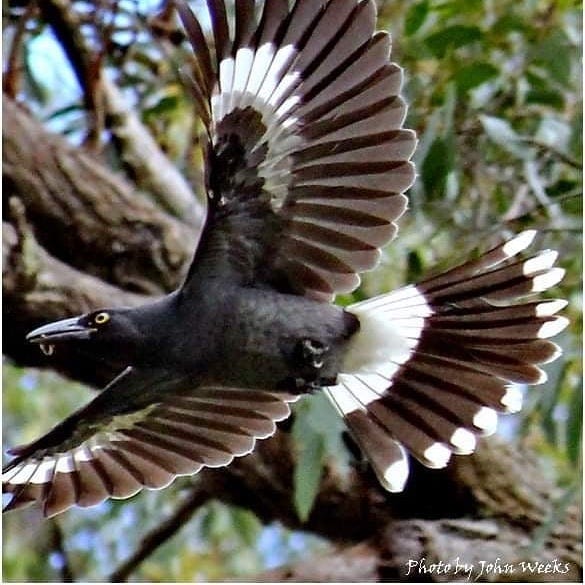
So. I learned that there is the Pied currawong (currawong, currawong) with it’s many regional sub-species, and the Grey currawong (kring, kring) - which I know as the Bell currawong. They have very different calls. They look pretty similar, but the Bell currawong is blacker, with less white flashes.
The Bell currawongs are also the ones who travel high into the mountains over summer, to mate and to nest. The Pied currawongs follow this pattern sometimes too, but oftentimes they stay down in the lowlands all year.
The Grey currawongs are dedicated seasonal travellers. They spend the winter in the lowlands and coastal areas, and travel to higher forests in early spring. ‘Altitudinal migrants’ is the term for it, I learn.
Grey currawongs span the south half of Australia’s coastal lowlands over winter, and they’re also found in lutruwita Tasmania, too. I listen for them in our costal lowland valley most mornings - in winter, as it is here, now.
Soon, in the next month perhaps, they will head up to the high forests of this mountainous island - to Cradle Mountain, Hartz, and the Western Wilderness.
No more to be heard in these parts until well after summer, when autumn draws down, and the days get shorter, once again. ‘Kring, kring.’ ‘Kring, Kring.’
Season keepers. Mountain keepers. Rain keepers. Time keepers.
Their departure from here means the warm weather is coming (eventually). And they will come as the sound of winter, when they return.
Whereas, for where I used to live, up in that high valley on Djaara country - where the Bell currawongs’ arrival songs pulled me from sleep that time - they bring the spring with them.
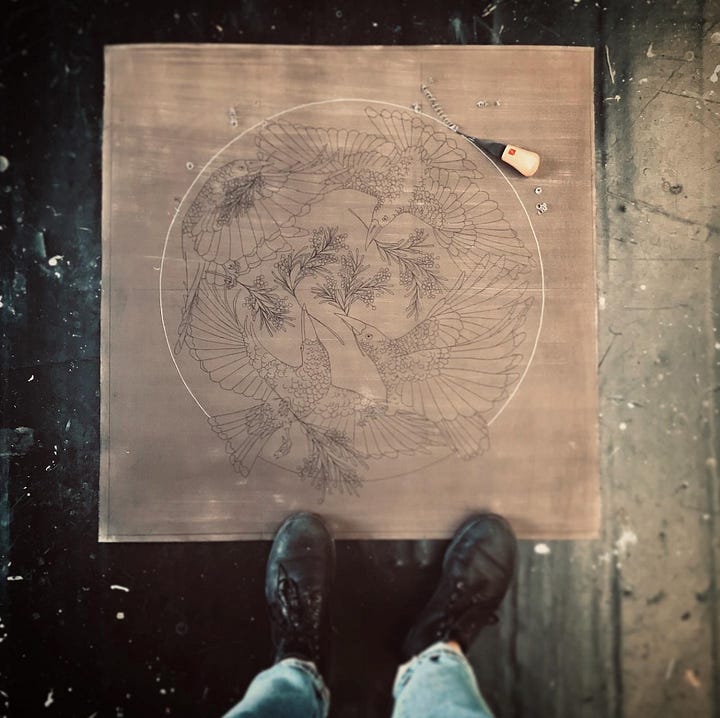
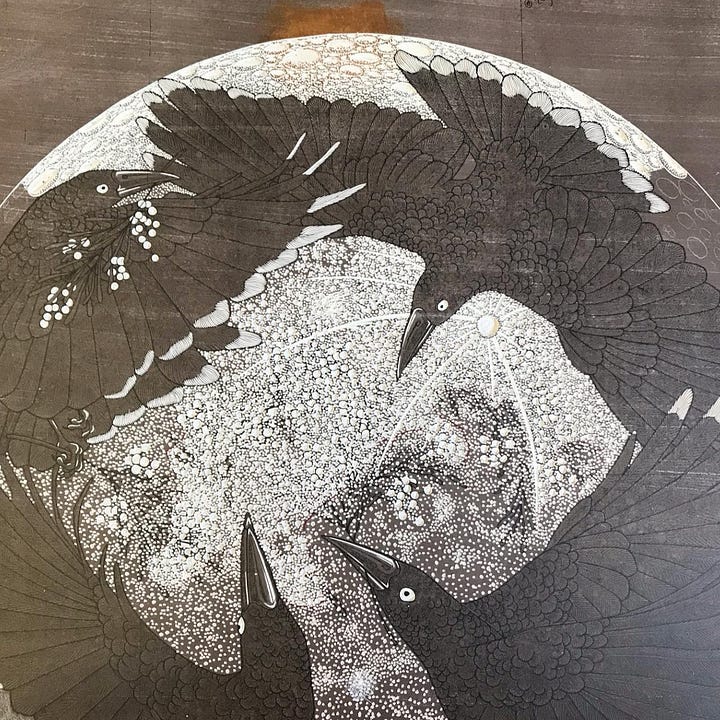
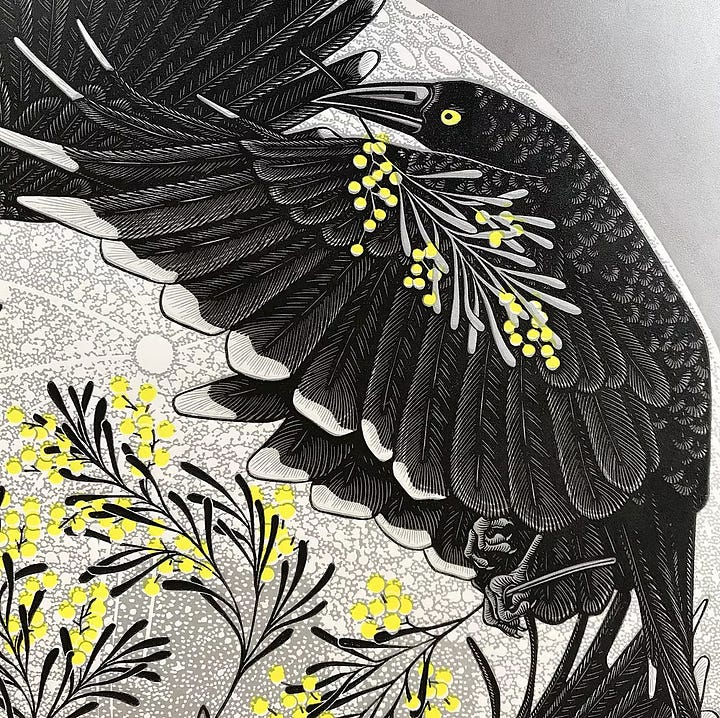
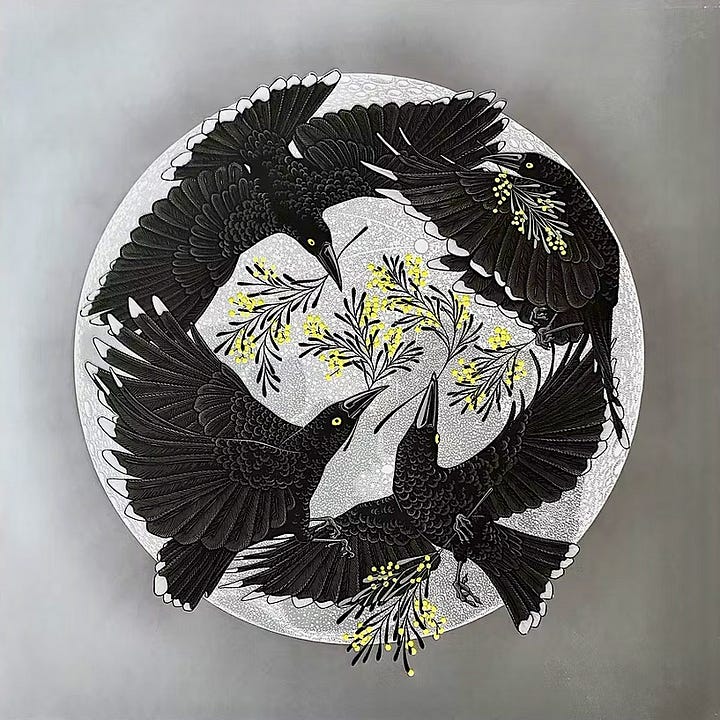
I’ve found many references to the Grey currawongs as messengers, in the indigenous histories and stories that I could find. Sometimes as good messengers. Sometimes as ‘pack up and go home right now’ messengers.
Sometimes as bringers of rain. Grey currawongs and winter rain, coming down from the mountains together, to soak the lowlands, once again, after a long hot summer.
The D’harawal story of the currawongs, magpies & the cloud spirits is here, if you’d like to read.
And their eyes. So watchful, so yellow. Not white like the raven. Or red/brown like the magpie. Just a pure golden yellow. Always yellow. I’m sure there’s many stories about that, too.
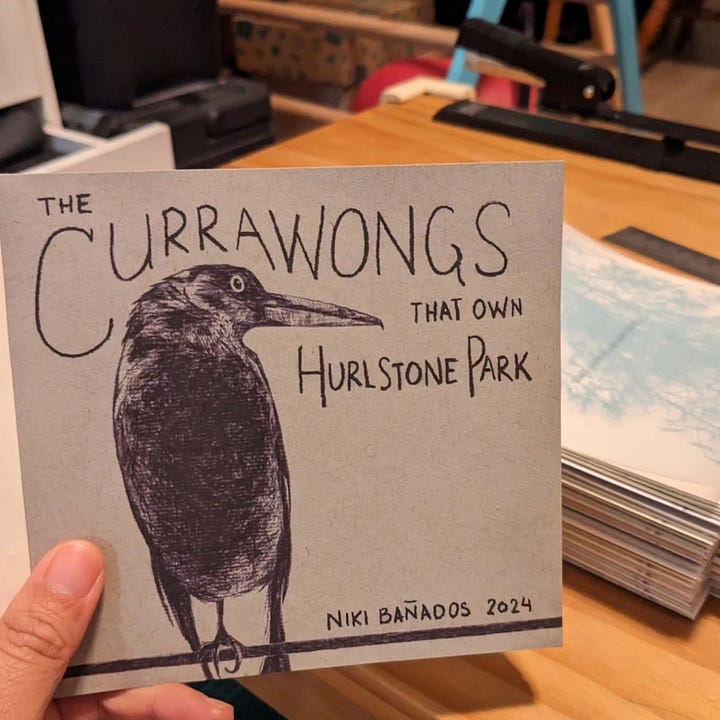
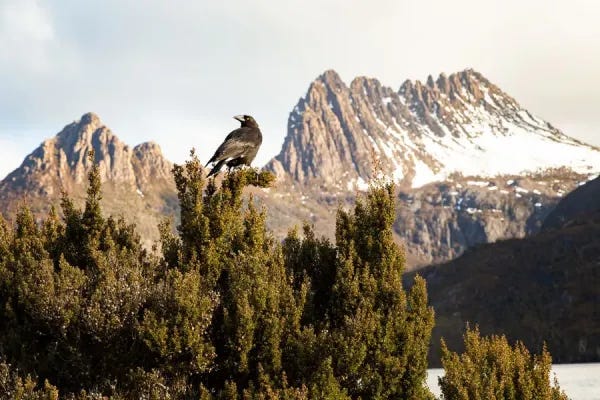
Thinking of how we chart the year, time passing, seasonal shifts... Thinking of the calendars in our ears and hearts and ecosystems that recognise far more seasons than four, (like the Wurundjeri calendar). All much more useful than the imported quadrant of seasons, overlayed from another hemisphere and world.
Anyways. It’s up to us all to re-chart our own seasons of place, I think. For wherever we are. For the country that we’re on, and in, and underneath, if we’re including the flightpaths.
I love that the Grey currawong sits in multiple calendars, in this way.
For my current calendar of place, where I live now, the Grey currawong is the sound of winter. I love listening for them in the early morning frosty air, before the winter sun slowly comes up.
While in Djaara country, the Grey currawongs are the sound of spring. The sound of nesting, and of future cicadas, longer days, and crackling dry grass.
The great stringy strands of bark, that the Manna Gums dump to the ground over summer (often with the assistance of currawongs and cockatoos), revealing tasty grubs beneath, and laying the scene on the forest floor for a cool burn to come through.
And then, when the summer heat is done and all the grubs are eaten, the Grey currawongs will depart - leaving those high forests to other bird’s calls - up, over, and back down the mountains with the rain, back down to the forests in the low valleys, like mine.
And I will hear them again, and know that it is winter.
So turns the year.
‘Kring, kring.’ ‘Currawong, currawong.’
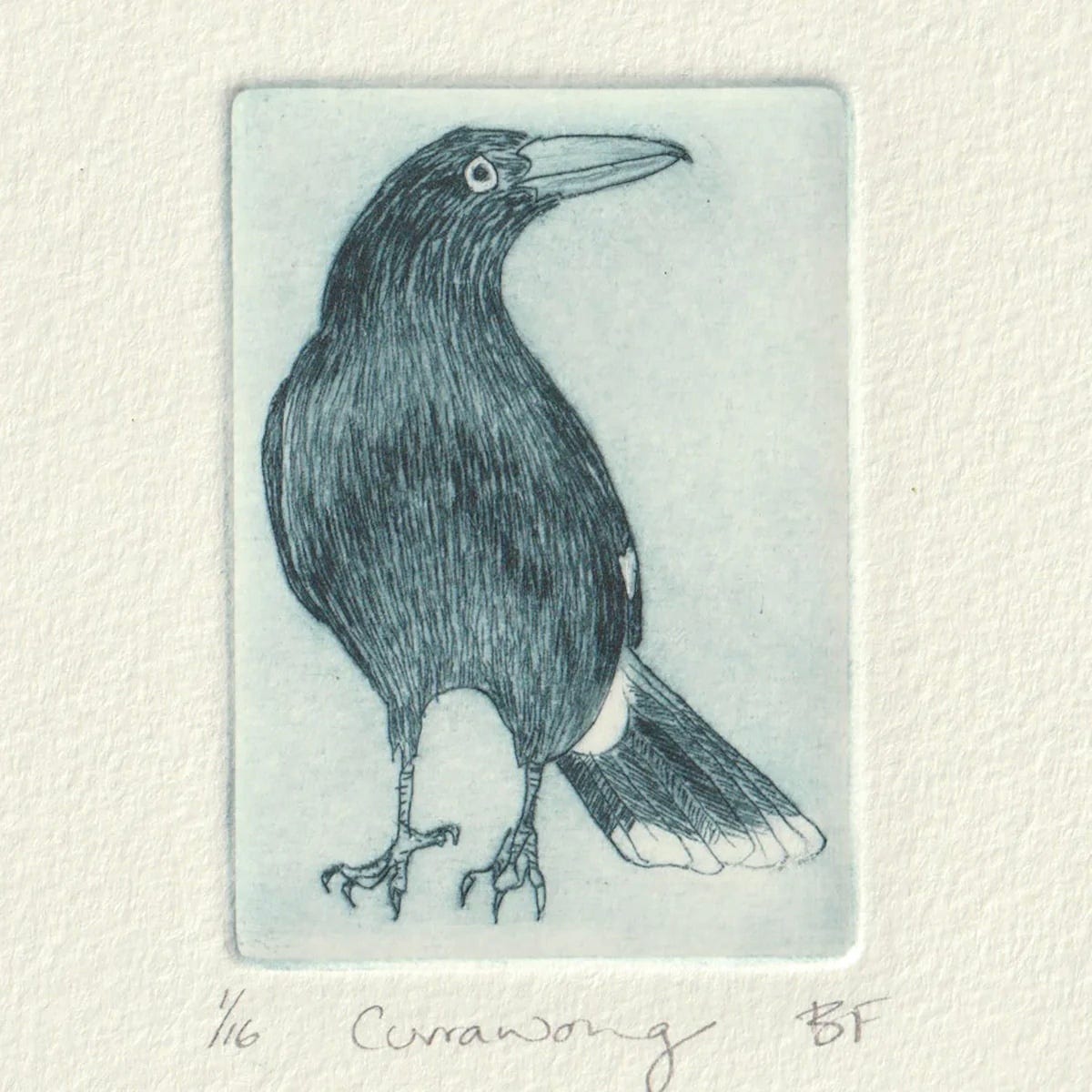
*Dear Black currawongs (karki klawki, karki klawki), who live exclusively in lutruwita - I love you also, but this piece was centred on the Bell currawongs. And yes I know, you are the currawong who forages in kelp! So awesome! So just to say that I see you, and wave each time you pass overhead x
Artworks above:
The Currawong who owns our building - Niki Bañados
Currawong - John Weeks
The Currawongs who own Hurlstone Park - Niki Bañados
Currawong - Keiran Stone
Currawong - etching (the sweetest face!) Bridget Farmer




I love all of the threads you write of, but particularly taken by you speaking of the absurdity of importing the seasons from another land and overlaying over the diverse lands here!
I spent a year (a full cycle) mapping the seasons on the lands where I live (northern NSW) and discovered double, from my personal observations. It was a truly deepening connection experience and one I continue to deepen with as the cycles shift over the years.
Thank you for bringing it to more people's attention. It was a dream I held to speak of this, but life hasn't yet woven my thread this way (so far), too deep in 'mum life' currently 😅
I loved this post so much and was so fascinated by the story of the currawongs and how they announce the season's changing. I'm not sure what birds we have here that might do the same thing but am going to pay more attention now! (and most likely ask my brother ;)